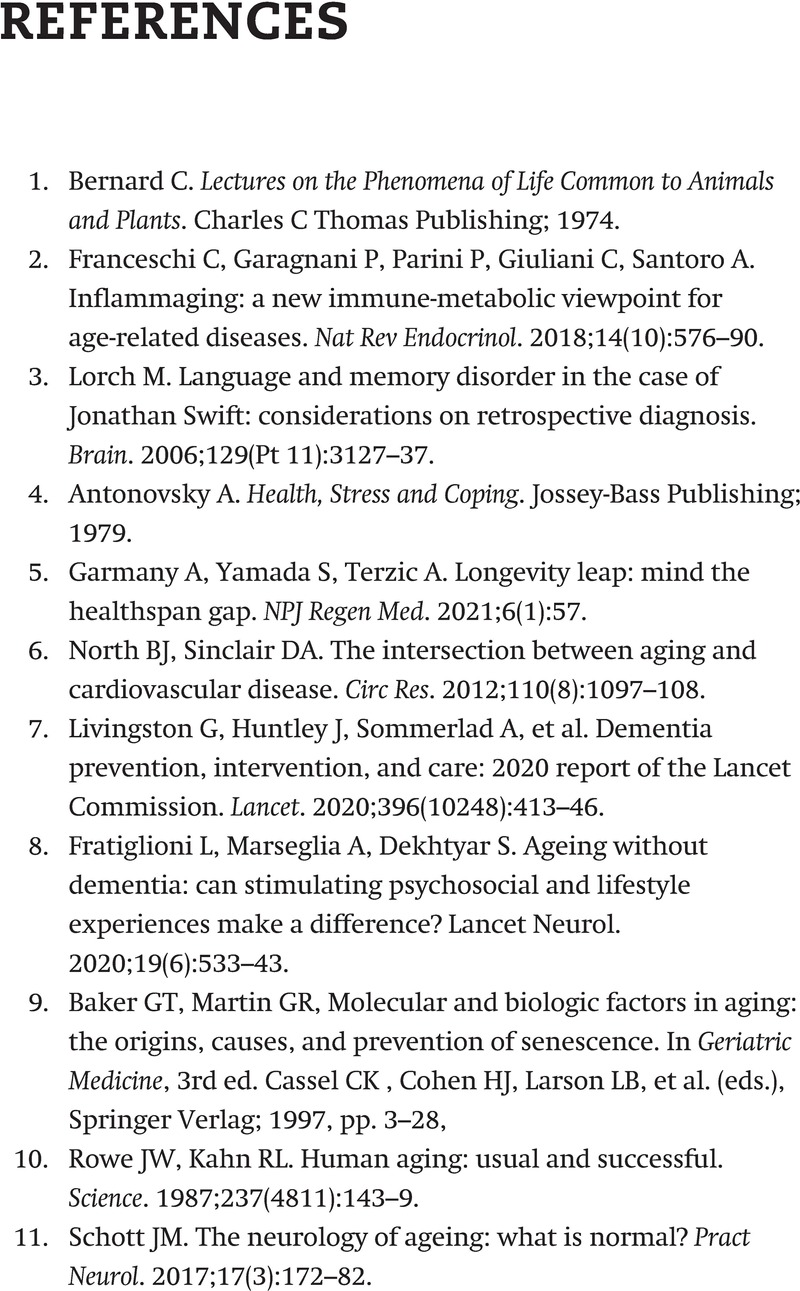Book contents
References
Published online by Cambridge University Press: 15 September 2022
Summary

- Type
- Chapter
- Information
- UnagingThe Four Factors that Impact How You Age, pp. 303 - 319Publisher: Cambridge University PressPrint publication year: 2022



